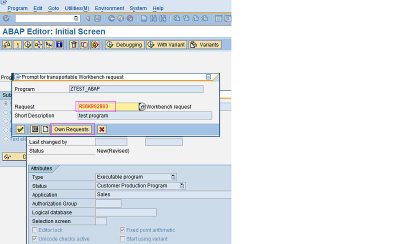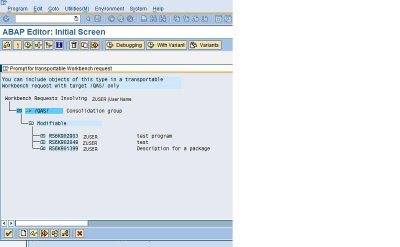Transport Management
CTS (Change and Transport System) :
The CTS is the central tool for managing changes to customizing and repository data that we make in the IMG or ABAP workbench.
As we have discussed earlier, a transport request cab be either customizing request or ABAP workbench request.
A customizing request can be created by the customizing tool IMG.
An ABAP workbench request can be created by ABAP workbench tool. Any changes or objects we develop through ABAP workbench are stored in Repository tables of SAP database.
As an ABAP developer you will be working with ABAP workbench and thus you create work bench requests.
A functional consultant works with configuration tool IMG (SAP Implementation Guide) T-code SPRO, thus creating customizing requests.
Transport organizer:
Transport organizer is the tool provided by SAP which records and documents all changes to objects in the repository and customizing. The transaction code for transport organizer is SE10 or SE09.
Transport organizer is fully integrated with ABAP workbench and customizing tool IMG. That means you can navigate in both directions from transport organizer to ABAP workbench and reverse also.
Development classes are used to group similar work objects that are being developed in a project.
While creating development class we must assign it to the transport layer.
All the objects assigned to that development class can be transported according to the routes defined in the transport layer.
Defining transport layer and routes is SAP BASIS administrator job. The transport layer defines transport route between the systems included in system landscape.
The development classes are themselves objects in the ABAP workbench.
The development class of a development class is always itself.
Change Request:
Information source in the transport organizer that records and manages all changes made to repository objects and customizing settings during a development project.
Task:
A task is assigned to a change request.
It is the information carrier in the transport organizer for entering and managing all changes to repository objects and customizing settings performed by employees within a development project.




